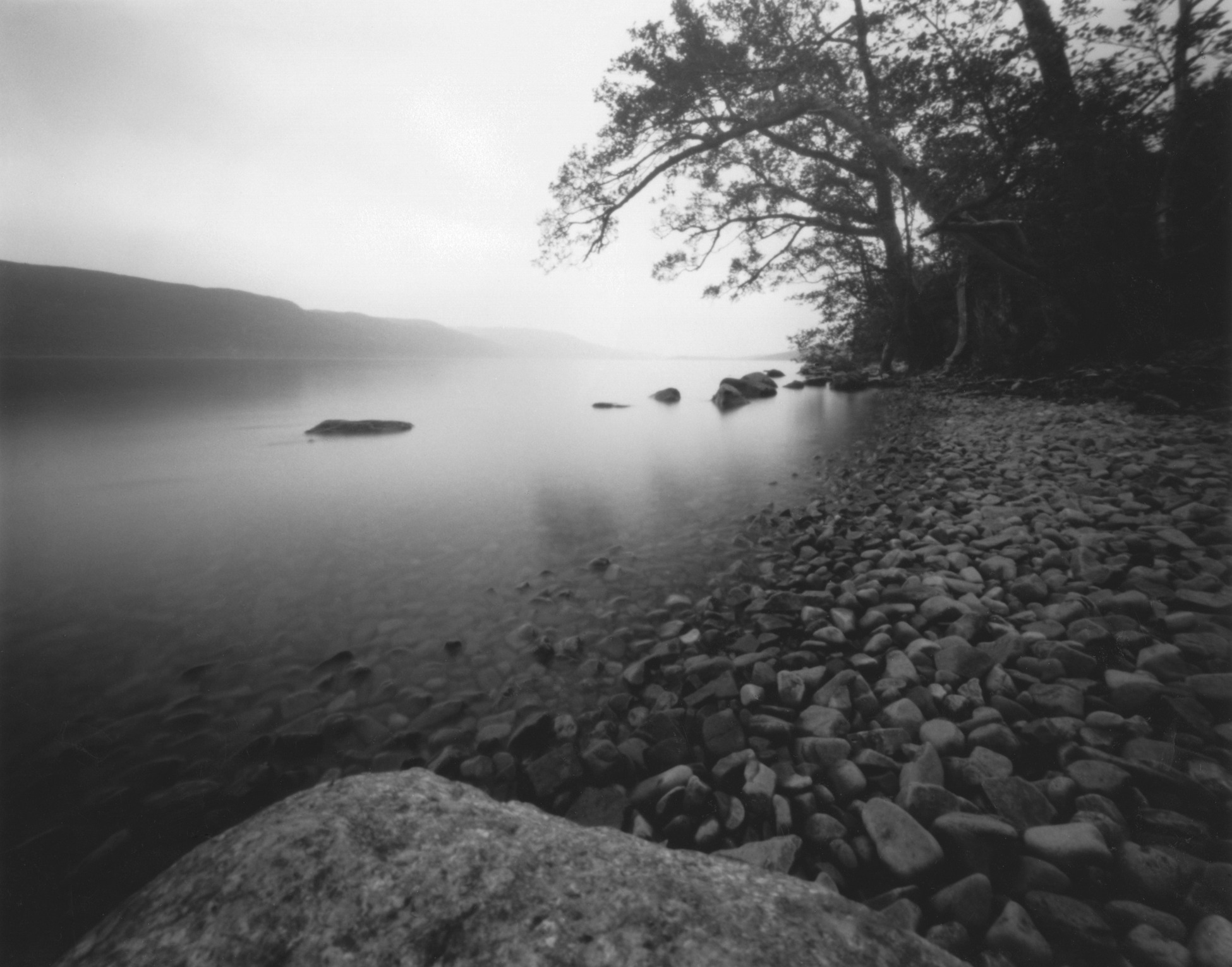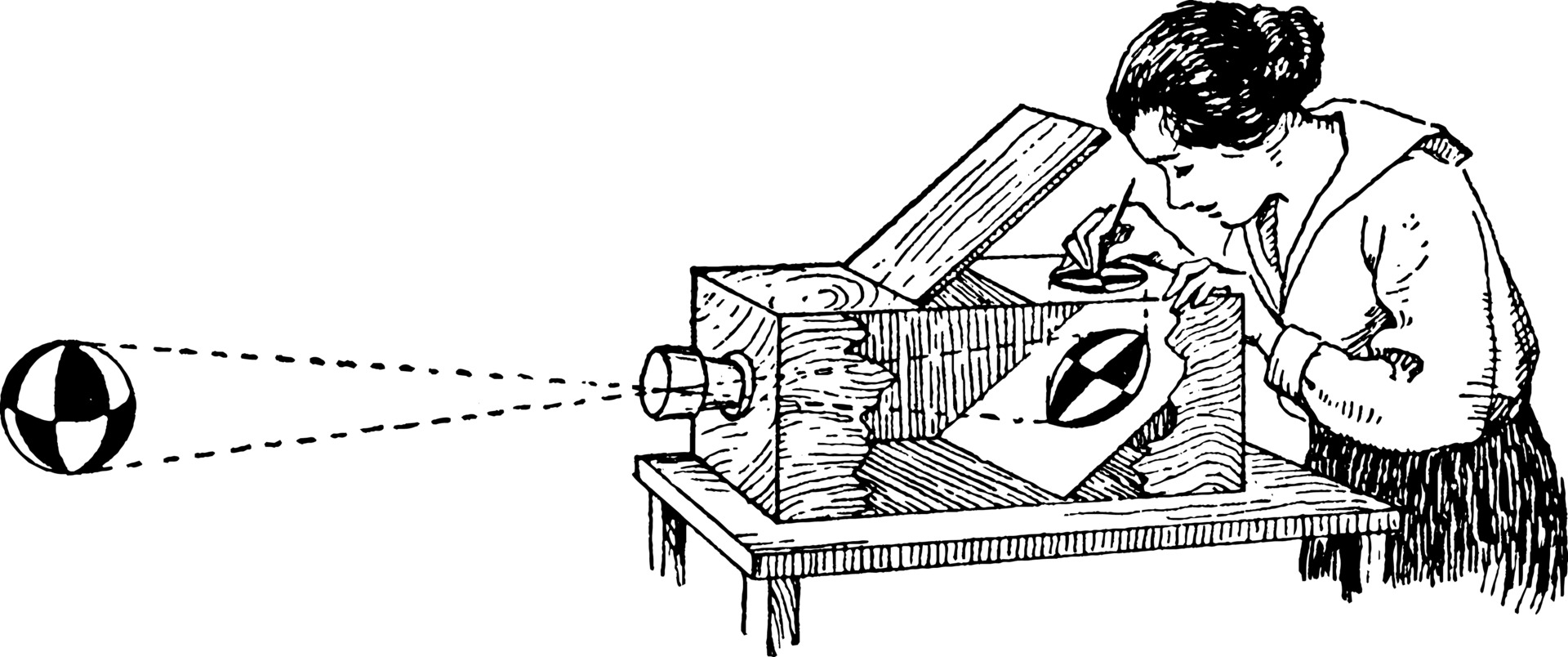The History of the Pinhole

A Historic Technique
The pinhole technique offers one of the most authentic ways to capture photographic images. This method follows the camera obscura principle, which has been known for centuries. At its core, it’s a simple process: instead of a traditional lens, a lightproof box with a tiny hole in one side allows light to enter and form an image. By placing light-sensitive material on that side and developing it, the image can be preserved.
Ancient Origins of the Pinhole
The principle of this technique has existed for thousands of years, long before the invention of photography in 1839.
- 4th Century BC: Aristotle first observed how light passing through a small gap between tree leaves created a perfect image of the sun on the ground. However, he couldn’t explain why.
- 13th and 14th Century: Scientists experimented with this principle to study solar eclipses and the nature of light.
- 15th Century: As a result, artists used the technique as an aid for creating accurate drawings.
Leonardo da Vinci’s Contribution
Leonardo da Vinci was among the first to explore the idea of using a box to project an image. He described how an image could appear on a transparent screen, allowing an artist to trace it from the outside. However, the camera obscura concept only truly began to develop in the 16th century.

Early Astronomers and the Camera Obscura
Although lenses existed at the time, scientists continued to use the pinhole principle to study the sun. Early astronomers sometimes observed sunlight directly through simple pinhole setups, which could lead to eye damage or even blindness due to prolonged exposure. To prevent this, they started using the camera obscura, a darkened room where an inverted image of the sun was projected onto a surface, allowing them to examine it safely.
From Science to Art
By the 18th century, the camera obscura had gained widespread popularity. In particular, travellers carried portable versions to trace landscapes and scenes during their journeys. These early ‘snapshots’ became keepsakes in travel books as souvenirs. For those who didn’t own a camera obscura, permanent camera rooms provided an alternative. In these spaces, rotating mirrors projected images onto a white table, creating a fascinating visual experience.
One of the best-preserved examples can still be visited today in Edinburgh, where a permanent camera room offers a truly magical experience. The camera obscura remained popular until the official invention of photography in 1839. From that point on, however, the pinhole principle was largely abandoned because artists no longer needed to trace images manually.
The Oninion Field: A Turning Point
For decades, the technique faded into obscurity until one photograph changed everything. In 1890 George Davison’s photograph The Onion Field reignited interest in pinhole photography. The image won the highest prize at the annual exhibition of the Photographic Society in London, demonstrating that this technique could also produce artistic and compelling images.
A New Wave of Interest
This particular picture was the beginning of the popularity of the pinhole camera, which lasted for several years. Consequently, some American companies also put pinhole cameras on the market, as well as a special pinhole disc that could replace the lens of a regular camera.
Decline and Revival
For several years, photographers experimented with pinhole cameras. However, by the 20th century, faster, mass-produced photographic equipment pushed the technique aside. Many saw pinhole photography as outdated and impractical. Eventually, educators primarily used the method to teach the basics of photography.
Between 1940 and 1960, interest in pinhole photography nearly disappeared.
A Timeless Art Form
However, the 1960s marked a turning point. Artists rediscovered the pinhole camera, experimenting with its unique visual effects. Today, photographers and artists continue to explore this historical technique, keeping it alive in the creative world.
You can sign up for regular updates if you don’t want to miss any blog posts!
Categories
